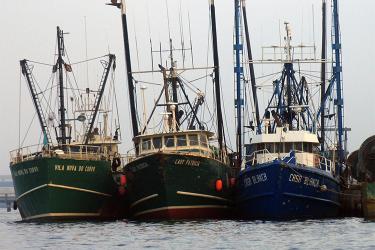Where did you grow up?
I grew up in Frederick, Maryland but I spent my summers in Kill Devil Hills, North Carolina where I developed my love of the ocean and interest in what lies beneath the surface. If you have not been to the Outer Banks, North Carolina, I highly recommend it. It’s one of my favorite places in the world.
Where did you go to school and in what subject did you get your degree(s)?
I have a bachelor’s degree in Marine Science with a minor in Applied Mathematics and a master’s degree in Coastal Marine and Wetland Studies from Coastal Carolina University. I went to Texas A&M University-Corpus Christi for my Ph.D. in Marine Biology.
How did you come to work at the Southeast Fisheries Science Center?
While working on my Ph.D., I completed a NOAA Center for Coastal and Marine Ecosystems fellowship as part of the José E. Serrano Educational Partnership Program. NOAA developed this fellowship and program to recruit and introduce undergraduate students and graduates to NOAA. For me, it worked. I honestly always wanted a career in NOAA but knew it was extremely competitive. I didn’t think it was a possibility until I got this fellowship. One of the requirements of the fellowship is that you take on a NOAA employee as a mentor. My mentor also just so happens to be my current boss, Dr. Matthew Campbell. We worked on a model that tracked the population dynamics of greater amberjack and red snapper under different artificial reef complex scenarios. After I graduated, I worked as a NOAA contractor for the Office of Science and Technology working on the Fisheries Economics of the United States report. I kept in touch with Matt and he encouraged me to apply when his branch had an opening.
What do you do at the science center?
I work in the Gulf and Caribbean Reef Fish Branch, which is part of the Population and Ecosystem Monitoring Division. Among other duties within our branch, we run a fishery-independent video survey that monitors reef fish populations in the Gulf of America (formerly Gulf of Mexico). One of my primary roles is to synthesize our video survey data and create indices for federally managed species that can be used in stock assessments or by fisheries managers.
What do you like most about your position?
It feels strange and obvious to say, but I like doing work that matters. The fact that my data analysis is used directly by fisheries managers is a scientist’s dream. I also love that I have the creative freedom to further explore these data to enhance our research portfolio. I’ve always been a shark enthusiast and even conducted my master’s thesis on blacktip shark movements around fishing piers. While my thesis research was super cool and the fieldwork was incredibly exciting, the publication hasn’t been directly applied to management decisions. With this job, I get the instant (more or less) gratification that my work impacts fisheries management.
What advice would you have for someone interested in a career at NOAA Fisheries?
It’s not impossible. All you have to do is find the right door and slam your foot into it. NOAA offers plenty of fellowships and internships—start applying! Reach out to scientists that you would want to work for or with someday. Who knows, they may have an internship coming up or may be looking for someone like you. Besides NOAA employees, much of NOAA’s workforce are affiliates or contractors. There are a ton of contract positions out there but you have to apply to the contracting companies rather than through the federal employment site, USAJobs. Almost every federal employee that I work with started as a contractor. Also, get good at coding. With artificial intelligence integration and automation in general, coding is an invaluable skill.
Is there a book, quote, or person that influenced you to be the person that you are today? Tell us why.
I know it sounds weird, but I’d like to thank those who bullied me when I was a kid. It made me strong and, in a way, free. With my mom’s help, one day I just stopped caring what they thought or said. I think that kind of inner strength has helped carry me through a lot of different aspects of life. I learned to focus on who and what is important, including my family and friends who have supported me throughout my journey, and not let self doubt affect an outcome. Self doubt, also known as imposter syndrome, is a common side effect of grad school. It’s important to stay confident in your abilities, realize that it is ok to be wrong, and keep chugging. So, Katie P., wherever you are, thanks.
What do you like to do outside of work?
Outside of work, I play a lot of tennis and soccer. I also love playing video games with my husband and spending time with our two dogs. Lately, I’ve been getting really into spearfishing and have joined an awesome spearfishing group on the Gulf Coast.



